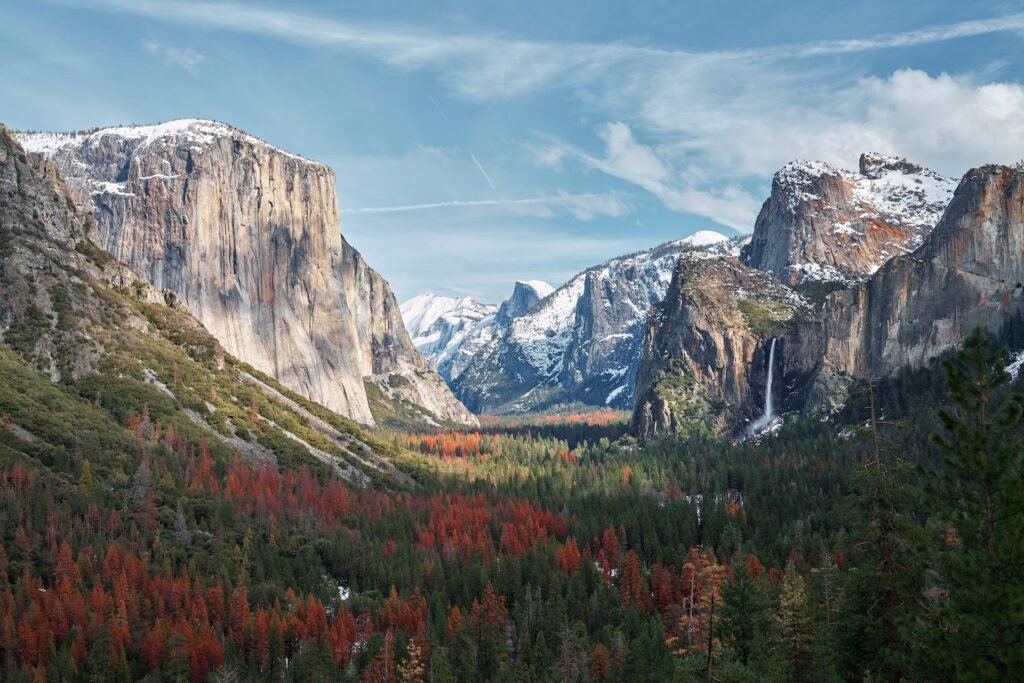Yosemite National Park, located in California’s Sierra Nevada mountains, is a true natural wonder. It is renowned for its breathtaking landscapes, towering granite cliffs, majestic waterfalls, and diverse wildlife. Whether you are an experienced hiker or a nature enthusiast, Yosemite offers a wide range of trails and outdoor activities to satisfy every adventurer’s cravings. So, if you’re seeking an unforgettable hiking experience surrounded by awe-inspiring natural beauty, Yosemite National Park should be at the top of your bucket list.
Overview
Yosemite National Park covers an impressive 747,956 acres, providing endless opportunities for exploration. The park is home to numerous hiking trails that cater to all skill levels, from easy strolls to challenging multi-day treks. With over 750 miles of trails, there’s something for everyone in this natural playground.
Difficulty of Hike
Yosemite’s hiking trails vary in difficulty, allowing hikers of all levels to enjoy the park’s splendors. Beginners can choose from easy trails like the Mirror Lake Loop or the Lower Yosemite Falls Trail. Intermediate hikers can challenge themselves with trails such as the Mist Trail, which rewards with stunning views of Vernal and Nevada Falls. Advanced hikers can tackle the iconic Half Dome hike, a strenuous 16-mile round trip with a 4,800-foot elevation gain.
Terrain
Yosemite’s terrain is as diverse as it is beautiful. From steep granite cliffs and lush meadows to dense forests and serene lakes, the park offers a variety of landscapes to explore. Be prepared for rocky and uneven trails, river crossings, and elevation changes, especially on more challenging hikes. It’s essential to have proper hiking gear and footwear to navigate the park’s terrain comfortably.

Best Time to Hike
The best time to hike in Yosemite National Park largely depends on your preferences and the trail you choose. Spring and early summer (April to June) offer lush greenery, blooming wildflowers, and roaring waterfalls. However, some higher elevation trails may still have snow in late spring. Summer (July to September) is the peak season, with longer daylight hours and more predictable weather. Fall (October to November) brings vibrant foliage and fewer crowds, making it an ideal time to visit. Winter hiking is possible but limited due to snow and icy conditions, so always check trail conditions and closures before planning a winter hike.
Route Options
Yosemite National Park boasts a wide array of hiking routes, each offering its own unique experience. Some popular routes include the Yosemite Valley Loop, Glacier Point to Yosemite Valley, and the Cathedral Lakes Trail. Research and plan your route based on your fitness level, available time, and desired sights.
Hiking Highlights
Yosemite is brimming with natural wonders that will leave you in awe. Some must-see highlights include Yosemite Valley, with its iconic landmarks like El Capitan and Half Dome. The Mist Trail takes you to Vernal and Nevada Falls, offering breathtaking views and refreshing mist. Glacier Point rewards with panoramic vistas of the park, while Tuolumne Meadows showcases the park’s high-country beauty. Don’t forget to explore the Mariposa Grove, home to the park’s majestic giant sequoias.

Essential Tips and Packing List
Before embarking on your Yosemite adventure, make sure to pack essential items such as a map, compass, plenty of water, sunscreen, insect repellent, and a first aid kit. Dress in layers as the weather can change quickly, and pack sturdy hiking boots to protect your feet on the rugged terrain. Additionally, bring snacks, a camera, and binoculars to fully enjoy all that Yosemite has to offer.
Safety Tips and Precautions
While Yosemite’s beauty is captivating, it’s important to prioritize safety during your hike. Stay on designated trails, follow park regulations, and be aware of your surroundings. Check weather conditions before starting your hike and be prepared for sudden changes. Wildlife encounters are possible, so maintain a safe distance and never feed or approach animals. Always let someone know your hiking plans and estimated return time.
In Case of Emergency
In the event of an emergency, dial 911 or find a park ranger for assistance. It’s crucial to have a backup plan and be prepared for unexpected situations. Carry a whistle, flashlight, and extra food and water in case of unforeseen circumstances. Knowing basic first aid and having knowledge of the park’s emergency procedures can also be life-saving.

Getting to Yosemite
Yosemite National Park is located in central California and can be reached by car, bus, or plane. The nearest major airports are Fresno Yosemite International Airport (FAT) and Sacramento International Airport (SMF). From there, you can rent a car or take a shuttle to the park. If you prefer a more scenic route, consider driving along the Tioga Pass from the east or the Big Oak Flat Road from the west.
Accommodation Options
Yosemite National Park provides a range of accommodation choices that cater to the preferences of all hikers. Throughout the park, there are campgrounds available, offering a rustic camping experience surrounded by the beauty of nature. For those seeking a more comfortable stay, Yosemite Valley has lodges and hotels that offer breathtaking views of famous landmarks such as Half Dome and El Capitan. Backpackers can also obtain wilderness permits for backcountry camping.
Permits
To hike in Yosemite National Park, permits are necessary for particular areas and activities. Day-use permits are mandatory for popular trails such as Half Dome and can be acquired through a lottery system. For overnight excursions and backcountry camping, wilderness permits can be obtained either online or at Wilderness Centers. Climbers also require permits for designated areas. It is essential to obtain the appropriate permits beforehand to guarantee a pleasant and hassle-free hiking experience in Yosemite.
The Bottom Line
In conclusion, hiking Yosemite National Park offers an exhilarating adventure surrounded by breathtaking natural beauty. The park’s diverse terrain and varying difficulty levels provide opportunities for hikers of all skill levels to explore and challenge themselves. It is important to plan your hike carefully, considering the best time to visit, route options, and essential tips for a successful and safe journey.







